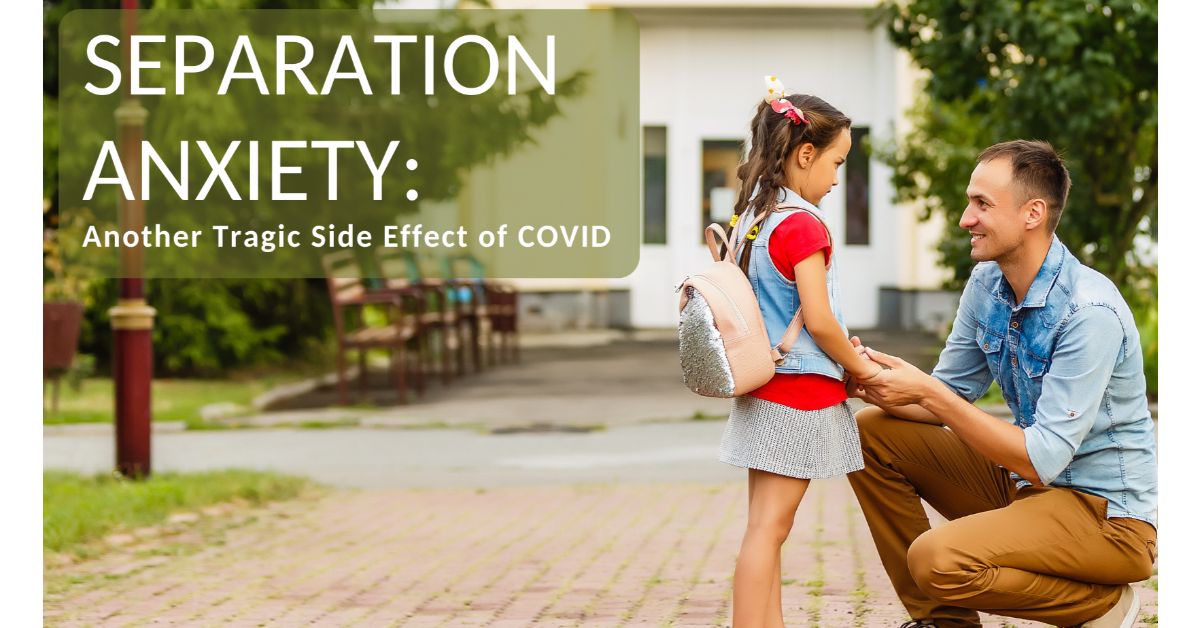Now that the vaccine is starting to roll out, we can see some tiny pinhole of light at the end of the tunnel of the COVID-19 Pandemic.
Many schools are planning for students to transition from their living rooms back into the classrooms. This may be of great relief to parents, but for some children who have not left their homes in over a year, it will be a huge source of stress and anxiety.
Enter separation anxiety. This is a normal developmental process usually seen in younger children. In school age children, this is not as common, but certainly can occur and is extremely hard on the entire family. How does separation anxiety show up in older children? Some may cry or become hysterical, be fearful, defiant or clingy. For others, symptoms are milder and may include, nail biting, hair pulling, becoming easily overwhelmed, tearfulness, or having physical ailments such as stomachaches or headaches with not medical cause.
Do you want to reduce the possibility of fearful leg-clutching, tears and screams? Here are some tips to ease your child’s transition back to school:
Create a plan. Letting your child know what to expect can be very helpful and, planning ahead allows children to have some control and confidence. The unknown is scarier than the known.
Practice separations in advance. Plan short, safe visits to a relative or a friend’s house. These visits won’t be as long as school and may be fun, but this gives some practice at transitioning and may help to eliminate fears. Allowing your child to experience small and pleasant separations will help to build their confidence. They will come to understand that separations can be positive.
Use transitional objects. They will serve as a visual reminder to your child that you are thinking of them. Consider making friendship bracelets together or exchange small tokens that can be kept in little pockets.
Create a “Good-bye Ritual”. This can be a short secret handshake or a call and response phrase that is repeated. Common phrases are “See ya’ later alligator, after while crocodile”. Be sure to make rituals short and sweet. The more you drag out a good-bye, the more difficult the separation becomes.
Finally, be aware of your own stress and anxiety. Children are very good at sensing when something is “off” with their parents. When you are worried, overwhelmed, and fearful, your children will pick up those fears, also becoming overwhelmed and fearful, making transitions difficult.
Remember, when it comes to children and transitions, it’s always best to plan ahead. Don’t hesitate to ask your school’s teacher or counselor for help. After all, they have been dealing with separation anxiety since before the pandemic. If your child continues to struggle, consult with a trusted pediatrician or qualified child therapist to prevent the anxiety from becoming more severe.
